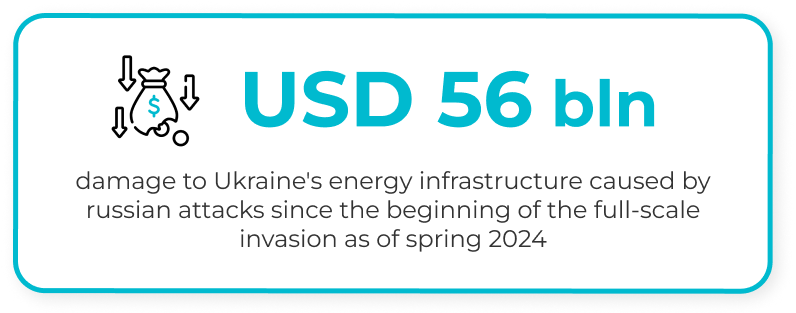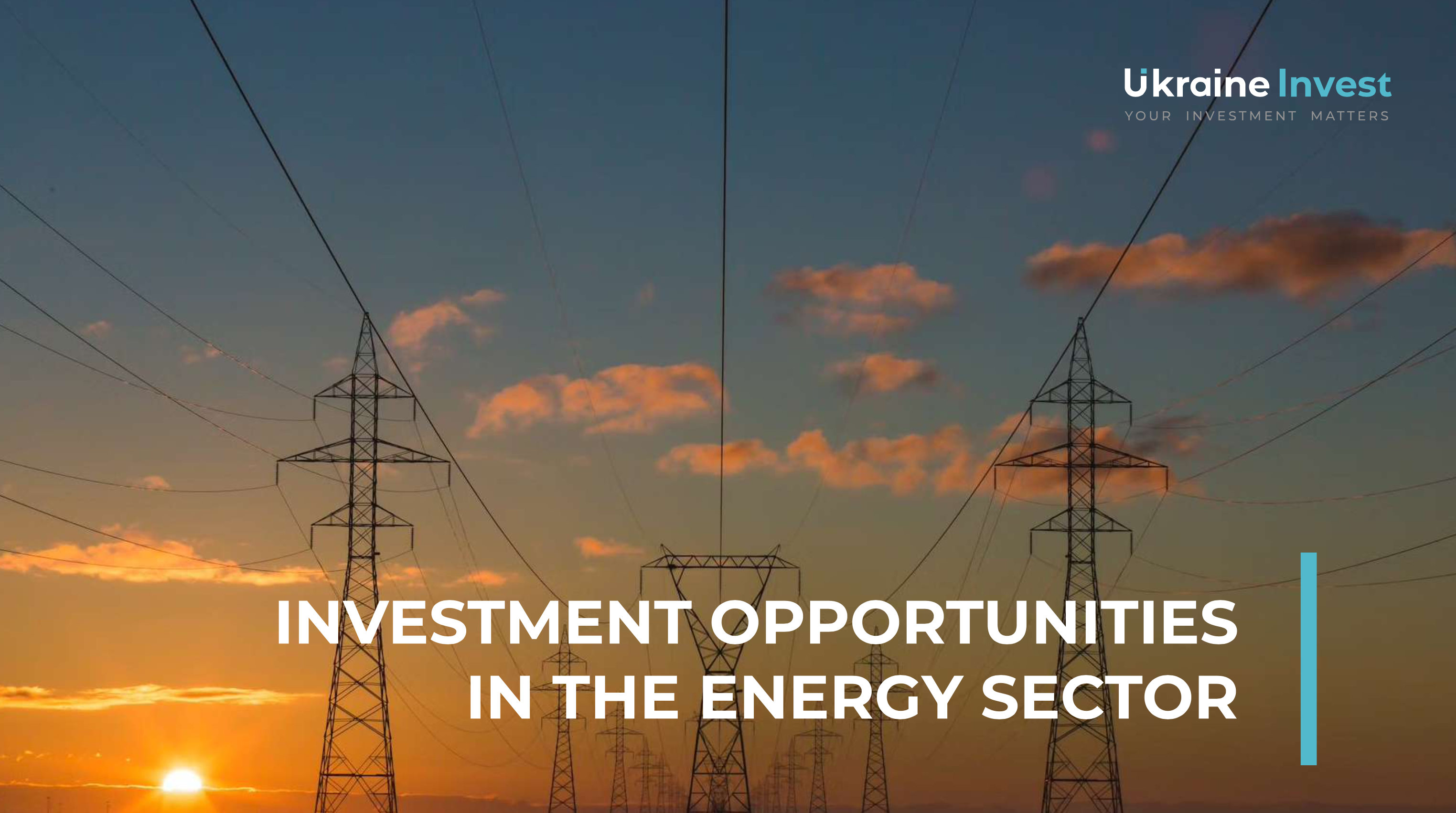Energy sector in Ukraine
Ukraine historically boasts a robust energy sector encompassing the oil and gas, hydroelectric, electric power, coal, and nuclear industries. Energy plays a significant role in the country’s economy, contributing 8% to the GDP and positioning Ukraine among the top 30 countries worldwide in terms of energy consumption. The energy sector is a major source of tax revenue for the state budget, accounting for nearly a quarter of the country’s total budget. Approximately 7% of foreign direct investment in Ukraine is directed towards electricity supply, underscoring the sector’s importance for economic development.

International Support
In June 2024, at the Ukraine Recovery Conference in Berlin, several significant international agreements were concluded in the energy sector:
– United States — USD 824 mln to support energy infrastructure.
– World Bank — An additional grant of USD 47 mln for the procurement of thermal equipment for Kharkiv, including 1,000 generators and solar panels.
– European Union — Initiation of solar panel supplies.
– Germany — EUR 30 mln to enhance the reliability of the energy system.
Moreover, memorandums were signed with several leading companies to focus on:
– Decentralized electricity production;цтва електроенергії;
– Increasing the use of renewable energy sources (RES);
– Implementing energy-efficient technologies;
– Developing smart grids;
– Restoring hydroelectric power plants.
These initiatives aim to restore and modernize Ukraine’s energy infrastructure, enhancing its reliability and efficiency.
Energy strategy of Ukraine until 2050
In 2023, Ukraine unveiled its Energy Strategy until 2050, outlining comprehensive investment opportunities for new energy capacities amounting to USD 383 bln. According to the strategy, these investments are allocated as follows:

The strategy emphasizes the need for clean energy production, the use of cutting-edge technologies, strengthening system resilience, and enhancing the energy security of both Ukraine and the European continent as a whole. By 2030, the share of renewable energy sources (RES) should constitute at least 25% of the country’s energy balance, and by 2050, Ukraine aims to achieve climate neutrality. To support the implementation of this strategy, the State Fund for Decarbonization and Energy Efficiency Transformation was established in 2023. This fund will facilitate the financing of projects aimed at reducing greenhouse gas emissions and increasing energy efficiency, which are crucial steps towards achieving energy independence and environmental sustainability for Ukraine.
Current energy challenges and recovery efforts
The National Bank of Ukraine forecasts an average electricity deficit of approximately 5% in 2024-2025, with power losses in the energy system reaching over 20 GW. Despite the challenges posed by the war, Ukraine is conducting a large-scale repair campaign on energy facilities and commissioning new generation facilities. By the beginning of the 2023 heating season, all repair works on thermal power plants (TPP) and combined heat and power plants (CHP) were completed, adding approximately 3 GW of thermal and electrical capacity to the energy system. However, this is insufficient as Russia continues to launch massive strikes on Ukraine’s energy complexes.
The Ukrainian government and the private sector are making concerted efforts to restore and develop the energy infrastructure. In 2023, DTEK, the largest private energy company in Ukraine, invested approximately USD 300 mln in repairing thermal power plants and coal mining. Additionally, the United States Agency for International Development (USAID) provided USD 475 mln in emergency energy assistance for the restoration and strengthening of energy infrastructure and critical components of power grids. Nonetheless, the investment potential for recovery remains significant.












